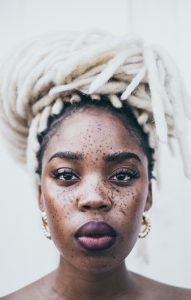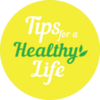
What is “clean beauty”? And for that matter, green beauty, eco-friendly beauty, and natural beauty? In this monthly column, clean beauty expert Jessica Yarbrough explores the ins and out of these buzzy claims, reports on the products and ingredients to look out for, and answers all the most pressing questions surrounding these topics.
Time for a round of Sad But True: Beauty Edition. Even if you use the best makeup setting spray money can buy, thousands of dead skin cells still flake off your face per day…along with the foundation they’re covered in. All the topical skincare in the world won’t cure hormonal acne, since the root issue—hormone imbalance—is internal. And “clean beauty,” sadly, means absolutely nothing.
That last one may sound strange, considering this is a “clean beauty” column and I am a “clean beauty” advocate. But as much as I love the idea of truly clean beauty, I have to admit: The phrase is basically a bunch of B.S.
The Food & Drug Administration provides no legal guidelines for terms like “clean,” “safe,” and “non-toxic.” (And although a bill was recently introduced to Congress to secure legal definitions for “natural” and “naturally derived,” it hasn’t passed yet.) As a result, brands can slap those words on any old product label they like, whether or not the ingredients inside are actually safe.
On that note: Who decides what “safe” means, anyway? Some scientists say that parabens, a class of preservatives used in cosmetics, pose no threat to the human body. Other scientists say parabens may contribute to breast cancer. And if scientists can’t even agree, how the heck is the average consumer supposed to know?! These are the questions that used to make my beauty-obsessed brain explode into bits on a regular basis.
Then I discovered The Precautionary Principle.
“The Precautionary Principle is a philosophy that allows decision-makers to justify prohibition of the release of potentially harmful new products, procedures, and policies when extensive scientific knowledge on the subject is unavailable,” Benjamin Knight Fuchs, R.Ph., a cosmetic chemist and founder of Truth Treatments, tells HelloGiggles.

The risk-assessment tool is primarily used in politics, economics, and environmental science—it’s not really a beautiful thing. But I find that by applying the Precautionary Principle to my product purchases, I’m able to develop my own working definition of “clean.” Here’s how to use it to create your own clean beauty guidelines:
The first thing to know about adopting the Precautionary Principle is that it’s not as complicated or philosophical as it sounds. It essentially involves researching the ingredients in your products, weighing the risks and rewards of each, and deciding if the reward justifies the risk.
Example: There’s a chance that talc, a common eyeshadow ingredient, may be contaminated with cancer-causing asbestos. (Talc and asbestos are found next to each other in nature, so it’s easy for contamination to occur. Brands are supposed to screen their talc for asbestos before formulating with it, but that step is expensive and sometimes gets skipped. Just this year, Claire’s makeup kit was recalled for containing asbestos.) The chance is small, but it’s there, so you ask: Am I comfortable taking that chance? Fuchs puts it perfectly: “It’s ‘better safe than sorry’ or ‘an ounce of prevention is worth a pound of cure.’”
Personally, I would always rather be safe than sorry when it comes to what I’m slathering on my skin, so the first thing I do is look up the available safety data for a particular product or ingredient.
The Environmental Working Group’s Skin Deep Database is an excellent resource. It rates both beauty products and individual ingredients on a “toxicity scale” of 1-10, based on scientific studies pulled from nearly 60 research databases across the world. It cites all of its sources, too, so you can read through the studies yourself. I also like the Think Dirty app, which makes it easy to assess ingredients on the go (say, if I’m about to buy 27 face masks I don’t need on a Target run).
The next step is determining what data matters most to you and your individual body.
For instance, my skin is super sensitive, so if a particular ingredient has a history of irritation or disrupts the skin barrier (like sulfates and exfoliating acids), it’s a no from me. I also deal with a lot of hormonal issues, so I don’t touch possible “endocrine disruptors” (a category of substances that act like hormones and interfere with the body’s endocrine system, like parabens and phthalates). I’d like to avoid cancer if possible, so anything that’s a potential carcinogen or is even loosely linked to tumor formation (mineral oil, formaldehyde releasers, talc) is a pass. I’m not super comfortable with synthetic chemicals floating around in my bloodstream, either, so I avoid ingredients proven to infiltrate the blood barrier (like chemical sunscreens); and I don’t like the idea of products that aren’t pregnancy-safe, which eliminates benzoyl peroxide and retinol.

What does that leave me with? Basically, 100% natural products, most of which I DIY.
Now, I understand mine is a very cautious approach, and it might not be your approach. Maybe your biggest concern is getting rid of a pulsing pimple as quickly as possible, and that reward is worth the risk of benzoyl peroxide. Perhaps you don’t like the white cast left by some zinc-based mineral sunscreen, so you reach for chemical versions. If you’ve read all the studies on parabens and have decided for yourself that they’re probably not harmful—that’s great! You can feel good about using parabens, then.
That’s precisely why the Precautionary Principle is such an amazing tool for clean beauty: So many ingredients have limited safety data, or no safety data, or conflicting safety data. Exercising precaution allows you to say, “I don’t know for sure if this ingredient is ‘bad’ or ‘dirty,’ but just in case it is, I’m not going to use it.” It’s not about making definitive statements that might not be true or sweeping generalizations about synthetic chemicals.
It’s about making the right decision for you and your body; and that’s something no beauty brand—“clean” or otherwise—can do for you.

terrific post